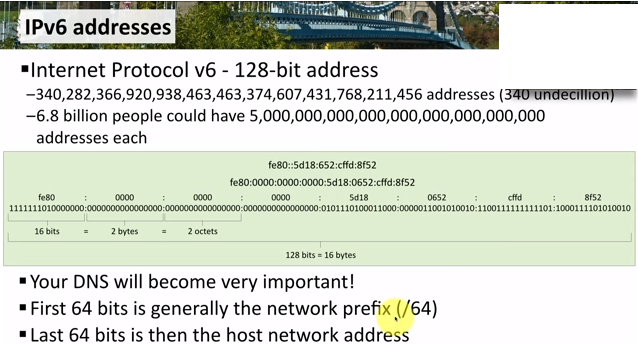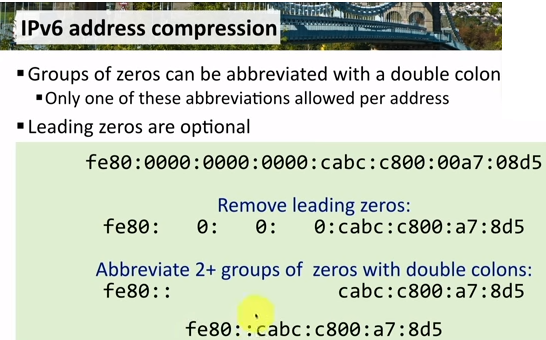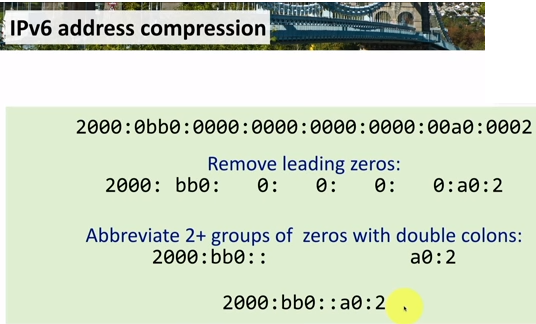

In our previous example, there was a double colon in the IPv6 address. That’s because that was a compressed IPv6 address. There were sections of zeroes and we replaced those sections of zeroes with simply a double colon so that the IPv6 address would be a little bit easier to read. If there are leading zeroes in a section of an address, you get rid of the leading zeroes as well to compress the address down even further. Let’s do an example of this.
We’ll start with an IPv6 address. Here it is the fe80. There’s a bunch of zeroes. Here some other numbers in the address. It;s a nice long address and we want to compress it. The first thing we’ll do is we’ll remove anything that has a leading zero. So we know there’s a leading zero here with the 00a7. There’s also one leading zero here with the 08d5.
So if we remove that, we’ve really got rid of all the leading zeroes in these three sections and the two leading zeroes here, and we got rid of this leading zero to make this a little bit easier to read. Now as you can see here, we do have a section where there is simply a 0 a 0 and a 0 altogether. We can simplify that even further by taking those groups, and it has to be two or more groups to really be useful here, and replacing that with a double colon. That means our number now simplifies to fe80.
There’s our double colon. We’re skipping all of those zeroes and then we’re bringing down the rest of what we have here. So that gives us a final IPv6 address of fe80::cabc:c800:a7:8d5. And although, that still is a very long address, it’s not something that you could easily remember. It is much easier to view certainly much easier than the fully listed IPv6 address that we have at the top.
One thing to keep in mind you can only replace this leading set of zeroes is grouping of zeroes with a double colon one time in an address. You can’t do that more than once or you won’t know exactly how many zeroes it’s replacing. So you would only be able to perform the double colon once. Even if there were other groups of zeroes later on in the address, you still would not be able to replace them. You have to choose one or the other and only have one set of double colons. Let’s perform another practice of a compression.

We’ll do exactly the same process we did in our last example. Here’s our nice long IPv6 address with the eight different sections. You can see even here there are a large number of zeroes and some leading zeroes on a number of these sections. We’re going to get rid of all the leading zeroes. So this simplifies it down quite a bit. But we do have this section right in the middle, where we have four zeroes in a row.
We can replace every single one of them with the double colon. So when we bring that down, you can see that it is simplifying this quite a bit. So we’ve gone through this very long address to the top. We’ve compressed it down and the final address is 2000:bb0::a0:2., a much simpler way talking about this very long address. And if you’re reading or writing or even viewing this in your operating system, you’ll see this compressed address used most often, instead of writing out this very long IPv6 address.